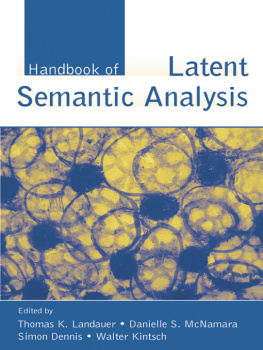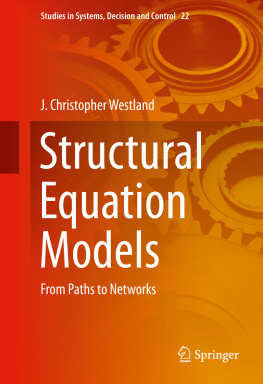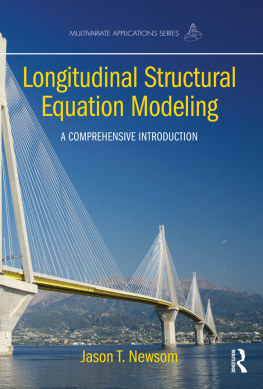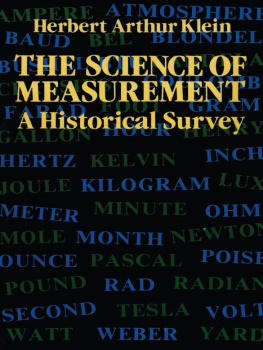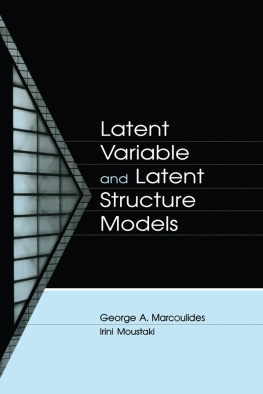Conclusion
Science progresses when researchers give themselves the means necessary to carry out their research properly. Without reliable and valid tools, all the knowledge that a researcher builds up through their investigations is simply an illusion, far from reality. In particular, the measurement of concepts plays a central role in this pursuit of reality. Nevertheless, the choice of a scale to operationalize a construct is too often made in haste and with imprecise arguments such as a few observed reliability and validity indicators, shown in past research. This is insufficient as a guarantee of the quality of the measure in question, to be able to translate respondents evaluations into scientifically meaningful information more accurately.
Deciding on the scale to use is a task that requires a good theoretical understanding of the construct to be operationalized, reflections, common sense and good methodological and statistical knowledge. The multitude of prudent and profound investigations to be carried out, even if they seem long, intertwined and cumbersome, allows for a progression of the reflection leading gradually to a very precise measurement of the phenomenon studied.
With all the rigor and scientific dimension of the processes to be adopted, the measurement scale designer composes, in the manner of an artist, the different attributes of a scale in order to obtain a harmonious, congruent, understandable whole, where all the components fit well without any errors for the purpose of understandings close to the realities experienced. To do this, the researchers involvement is much deeper than simply examining a few definitions, clues, etc., but it also revolves around their ability to choose, judge, adjust, in short, to make the right decisions at the right time. This does not necessarily imply an emphasis on a type of measurement scale, a response format, a statistical protocol, etc., but rather the thoughtful arrangement of a set of means that give evidence of the robustness of the conclusions resulting from the use of a scale.
The proliferation of the points of view presented in this book on the variants of a scale should thus encourage scale developers to focus on the choices they will support. Indeed, there is not a single way to measure a latent phenomenon and we must look for the most appropriate one. The different choices made must always be clear so that researchers, who are later interested in adopting the scale, have the ability to appreciate it. Admittedly, increasing efforts to create and develop reliable and valid measurement scales for constructs does not mean that the results obtained, through their operations, are error-free. Indeed, apart from measurement considerations, other methodological provisions may support bias if they are poorly established. Efforts in this direction must also be made.
Without revisiting the various discussions we have developed in this book, we have tried to provide a better understanding of the notion of measurement, the design and construction processes of a scale and an outline of the main decisions to be taken at the various stages involved, while drawing on the state of current knowledge in order to reduce or even eliminate the errors that these procedures and choices can generate in a research process. It should be noted that the search for appropriate tools to study latent phenomena is not an issue that only concerns marketing, indeed research studies in many other disciplines face the same challenges highlighted in this book. It is our hope that this book can therefore offer a fruitful and beneficial analytical framework for many researchers. It should be noted, however, that future progress, particularly in statistical methods, can enrich discussions on scale development and validation, and could change the interpretations of measurement protocols.
Glossary
Adapt a scale:involves using an existing scale while making substantial modifications that do not exclusively concern translation considerations (example: deletion and/or addition of items) due to contextual differences in the measurement of the phenomenon.
Adopt a scale:involves using an existing scale, including a translated scale, when it is considered equivalent to the measurement of a phenomenon in the context of the proposed study.
Asymmetric scale:a measurement scale whose number of response modalities includes a neutral intermediate position (example: neither agree nor disagree, do not know, without opinion, indifferent), so the number of response modalities is odd. The scale is asymmetric with (in addition to positive and negative values) a clearly identified central (neutral) point.
Attitude scale:a scale of measurement where the respondent expresses their attitude regarding an object (example: a shop) on the basis of a set of criteria (items) enabling latent, abstract constructs of attitudes, opinions, intentions, etc. to be operationalized by allowing their translation into information allowing their quantification for analysis purposes (example: Likert scale).
Balanced scale:a scale where the number of regular items (generally positive) is the same as the number of reversed items (opposite to regular items).
Categorical scale:a scale that allows each object to be assigned to a category (group) separate from other groups where no classification between groups is possible. It is used to identify groups and therefore name them.
Churchills paradigm:a succession of eight steps proposed for the development of multi-item reflective measurement scales.
Comparative scale:attitude measurement scale where the respondent expresses their evaluations in a relative way while comparing a defined number of objects, such as the ranking scale.
Confirmatory factor analysis (CFA):a multivariate analysis used to attest to the quality of the fit of a measurement model, to evaluate the reliability and construct validity (convergent validity and discriminant validity), and therefore to confirm (or not) the structure of a measurement scale.
Construct:a term that refers to an abstract, latent (sometimes called latent variable), unobservable phenomenon, without physical manifestations, created for a theoretical purpose and requiring a set of observable indicators in order to be measured.
Construct a scale:involves constructing a new scale to measure a construct based on an appropriate development procedure, when no existing scale can be adopted or adapted to assess the phenomenon.
Construct (trait) validity:seeks to demonstrate whether the scale, administered to a sample of respondents, provides an adequate representation of the phenomenon studied. It has two components: convergent validity and discriminant validity.
Content validity:also called consensus validity, seeks to establish, from a theoretical and exploratory point of view (expert judgment), whether the scale reproduces the content of the phenomenon. In other words, it is a question of evaluating whether all the items generated and put in an evaluation format reproduce the entire content of the phenomenon of interest in its different facets (dimensions).
Continuous scale:a non-comparative scale for measuring attitudes. The respondents evaluation of the object is done along a continuous line where no echelon is specified between two ends describing the object.
Convergent validity:consists in seeing if the items
a priori measuring the same phenomenon are strongly correlated.
Cronbachs alpha reliability:the alpha coefficient is based on interitem correlations expressing the internal coherence between the different selected items supposed to measure the same phenomenon. The higher the coefficient value, the better the reliability.
Develop a scale:see .
Dimensionality of a phenomenon (construct):explains its underlying factors (its structure). A construct can be one-dimensional (single factor), two-dimensional (two factors) or multidimensional (three or more factors).



